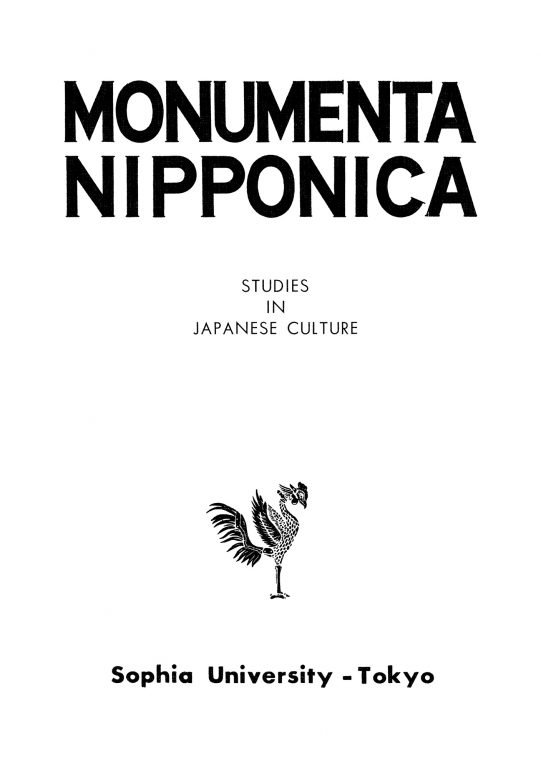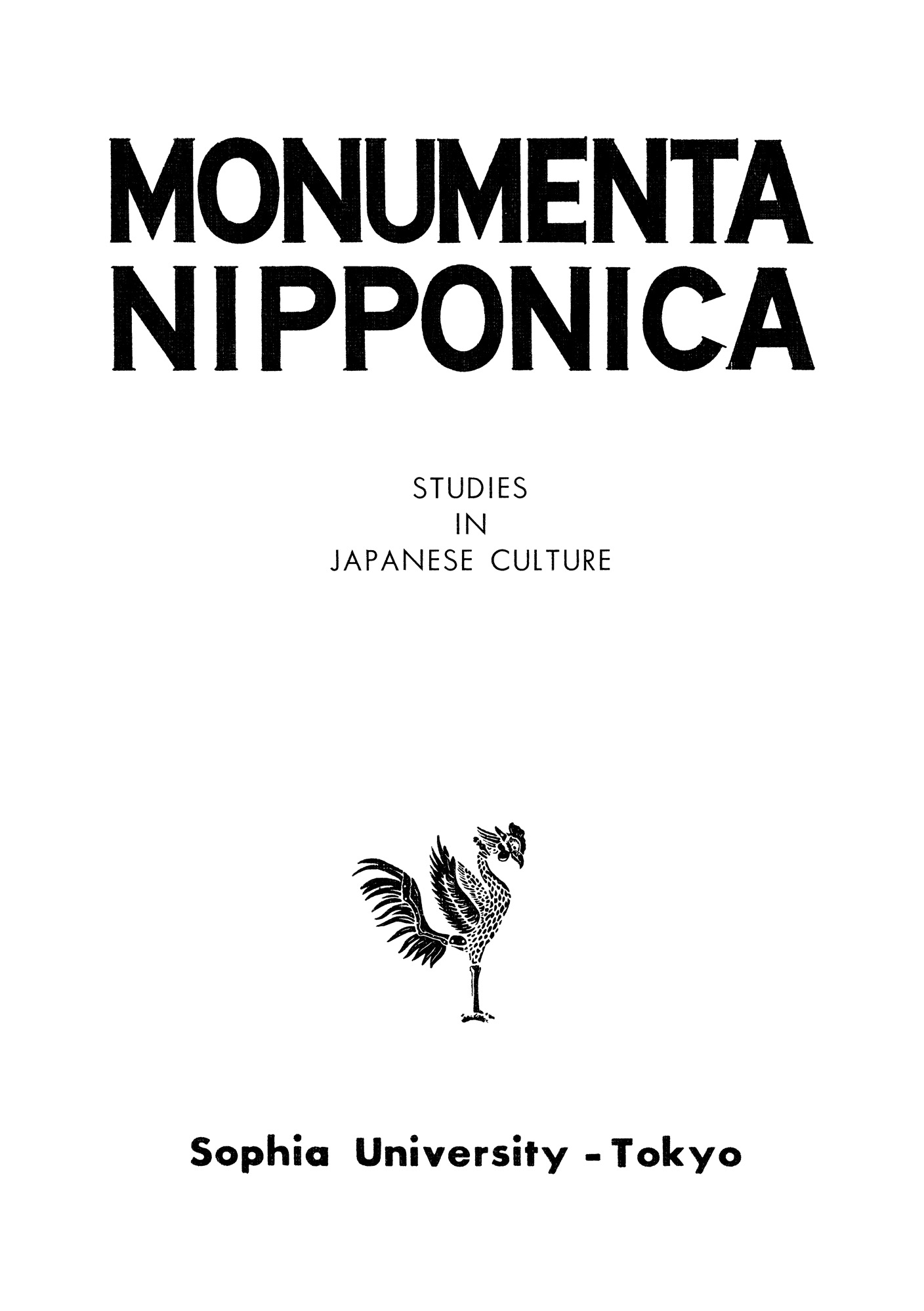The Structure of the Japanese Sentence in the 7th Century and the Functions of the Case-Particles no, ga and vaJ. L. Pierson
MN 7:1/2 (1951) pp. 209–18
As I have already tried to explain in an article: “An Effort to ar- rive at a Basis for a Comparative Grammar”, now antiquated in several respects, we may distinguish three phases in the structure of sentences: phase I, the self-centred view of the world; phase II, a more impersonal or neutral conception; and phase III, the mixture of I and II resulting in the partially illogical and incorrect language, we now speak. That is, in a sentence like: the mountain is high, the mountain may be a nominative, a genitive or an accusative by distinguishing the three phases: Phase I: I see the mountain (acc.) as high, Phase II: there is the highness of the mountain (gen.), Phase III: the mountain (nom.) is high.

